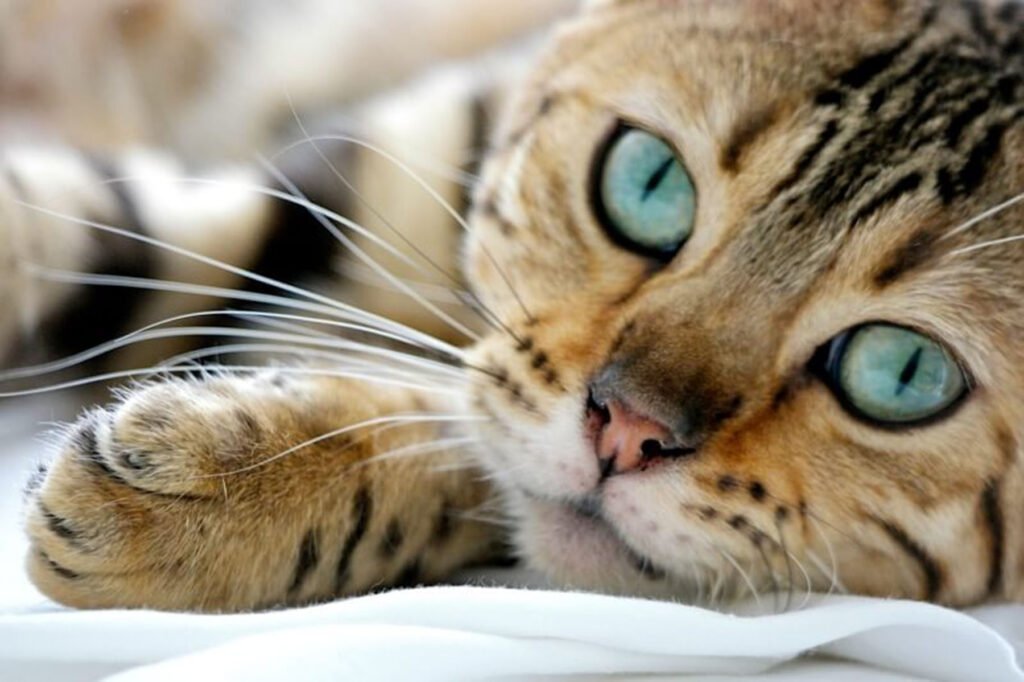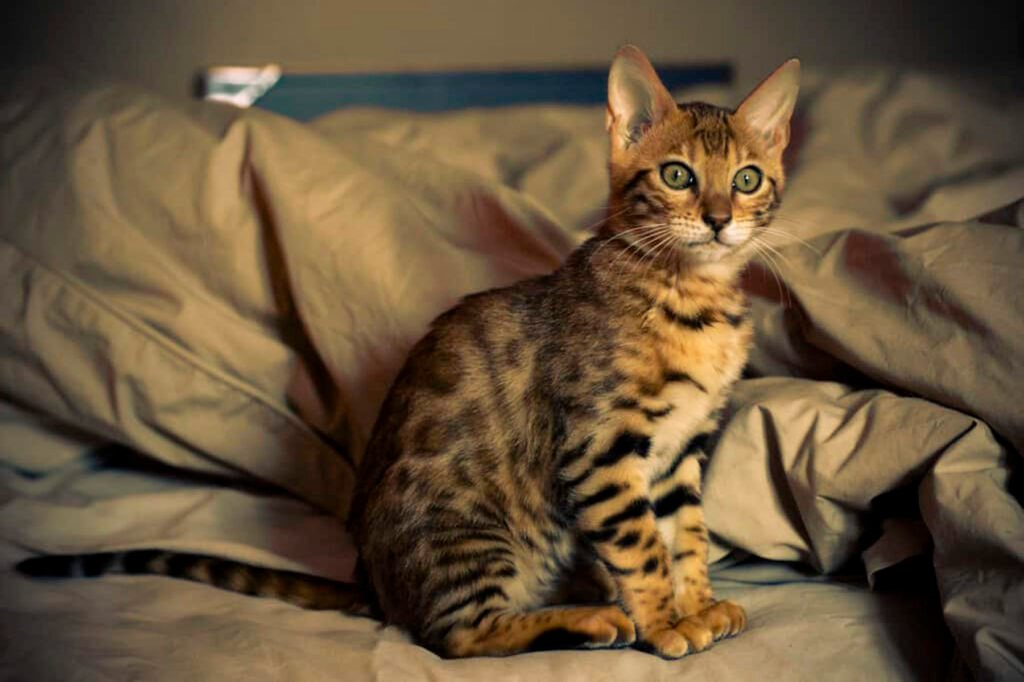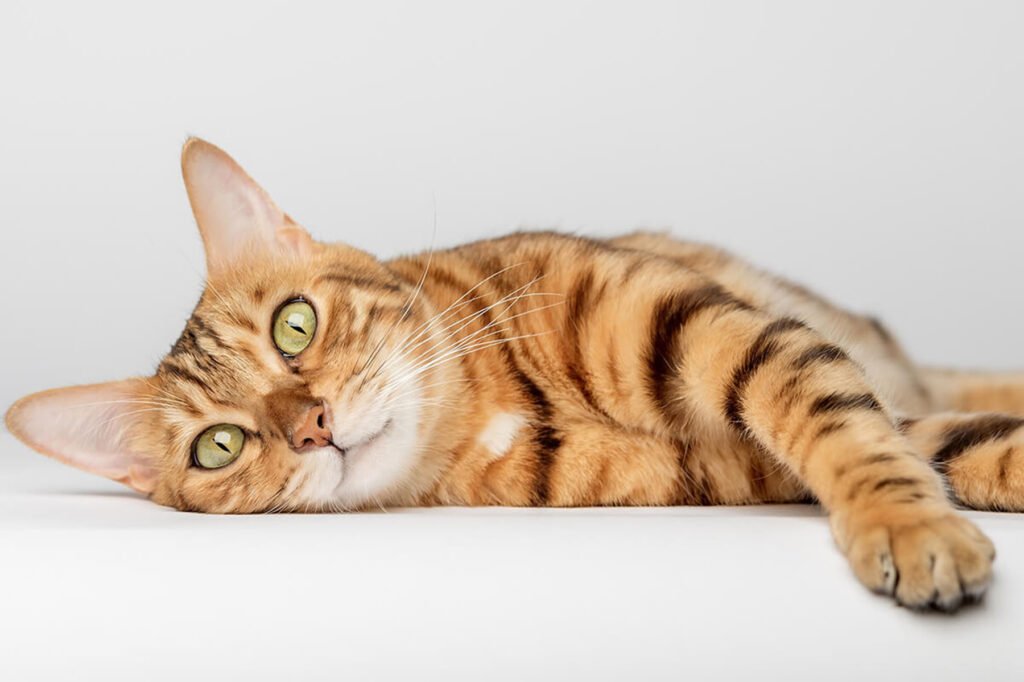

Table of Contents
Owning a Bengal cat is an experience filled with surprises, playfulness, and a touch of chaos. Unlike most cat breeds, Bengals are renowned for their high energy, striking appearance, and unique personality that many describe as more «dog-like» than feline. In this article, I’ll take you through what it’s really like to live with a Bengal, blending general information with firsthand insights from living with Gatsby, my own six-year-old Bengal, who continues to entertain and challenge us daily.
Origins and History of the Bengal Cat Breed
Bengal cats have a unique lineage that combines wild ancestry with domestic characteristics. This breed originated in the 1960s when a domestic cat was bred with an Asian Leopard Cat, a small wild feline native to parts of Asia. Initially, the goal was to combine the exotic look of the wild with the temperament of a domestic cat. Over time, selective breeding refined this trait blend, creating the Bengal cats we know today, characterized by their leopard-like spots, muscular bodies, and active temperament.
Physical Characteristics and Stunning Features of Bengal Cats
Bengals are instantly recognizable for their beautiful coats and athletic build. Their fur, short and smooth, has a striking pattern of spots and marbling that resembles a miniature jungle cat. Some Bengals even have a shimmering coat, known as the “glitter” effect, which gives their fur an extra sheen under certain lighting. Gatsby, for instance, has that eye-catching shimmer, and his blue eyes add a layer of intrigue that captures attention in an instant. The physical strength of these cats is evident in their powerful limbs and muscular body, traits that support their love of climbing, jumping, and, yes, running at top speeds around the house.
Bengal Cat Personality Traits: High Energy and Playfulness
One thing that defines Bengals is their boundless energy. Gatsby’s “witching hour” is a regular occurrence, especially at night, when he races through the house with incredible speed, often dragging along his feline friend for the fun. Bengals are highly active, curious, and intelligent cats that thrive on physical and mental stimulation, often displaying behaviors more typical of a dog than a cat. When he was younger, Gatsby was a non-stop ball of energy, chasing shadows, and attempting acrobatic feats that made us wonder if he’d ever sleep.
Over the years, his energy has somewhat toned down, but he still has intense bursts where he jumps over baby gates, vaults onto high surfaces, and “hunts” his toys with laser focus. These high-energy traits can be both entertaining and exhausting, so potential Bengal owners should be prepared for a breed that needs plenty of playtime and attention.
Adapting to Bengal Cat Behavior: Tips for a Harmonious Home
Living with a Bengal cat requires understanding their unique needs. Bengals like Gatsby can be affectionate but also quite demanding when they want something. If I’m working or distracted, Gatsby has his ways of letting me know that he’s feeling neglected, sometimes nibbling my ankle or making playful swats as I pass by.
An important part of having a Bengal is balancing their need for engagement with boundaries. Gatsby has a few favorite routines that have become part of our household rhythm—such as greeting me at the door every time I come home and flopping onto his back for belly rubs. And then there’s his unexpected obsession with water; he has a habit of joining me in the shower, racing from wherever he is the moment he hears the water turn on. For a harmonious home, providing Bengal cats with activities, toys, and interactive playtime is essential, or they will quickly find ways to keep themselves entertained, sometimes at the expense of your favorite furniture.
Living with a Bengal Cat: Challenges and Rewards
Owning a Bengal is unlike owning a “typical” cat. Bengals are affectionate and social but can also be demanding and relentless in seeking attention. With Gatsby, there’s a clear love-hate dynamic where he demands affection on his terms but doesn’t shy away from showing his displeasure when things don’t go his way. His energy is infectious and exhausting—like having a child or a high-energy dog—but his loyalty and friendliness are what truly stand out. He has mellowed with age, but the Bengal’s energy level always remains a notch above the average cat.
Gatsby also insists on following me around the house, which is something I love about him. If I move from one room to another, he’s there, watching and waiting. He’s far more interactive than any other cat I’ve had, and that’s a big part of why I wanted a Bengal in the first place. Bengals crave companionship and engagement, so if you’re considering one, be prepared for a very hands-on pet experience.
Health and Care Essentials for Bengal Cats

Bengals tend to be healthy cats, but their high energy does mean they benefit from an active lifestyle. Keeping them physically engaged not only meets their mental needs but also supports their overall health. Regular vet checkups, a nutritious diet, and plenty of enrichment activities will help them thrive. Bengals can also be more prone to certain genetic conditions, so it’s wise to consult with a breeder or veterinarian about any health concerns. While they may not need as much grooming as other breeds, their curiosity often gets them into messes, so occasional baths and nail trims are good practices to keep.
FAQs on Bengal Cats: Answering Common Questions
Do Bengals get along with other pets? Yes, many Bengals can get along well with other pets. They tend to be social but may be a bit assertive, so proper introductions are important. Gatsby, for instance, has a love-hate relationship with our other cat—they play and chase each other daily, balancing each other’s energy.
Are Bengals easy to train? Due to their intelligence, Bengals can be trained to perform tricks or follow commands. They’re quick learners and respond well to positive reinforcement. Gatsby comes when called and is eager to interact in various ways, making training a fun challenge.
Is the Bengal’s energy level always high? While Bengals are energetic, they may calm down with age. Gatsby was hyperactive as a kitten but has mellowed with time, although he still has his “wild moments” every evening.
Are Bengal cats worth the effort? If you’re looking for a highly interactive, playful, and intelligent pet, a Bengal can be incredibly rewarding. They’re unique, loyal, and form strong bonds with their owners, bringing a lot of personality and activity to any home.
In the end, owning a Bengal cat is a truly distinctive experience. They bring a mix of excitement, affection, and intensity that makes every day with them special. With the right care, training, and attention, they make loyal and entertaining companions. For me, living with Gatsby has meant adapting to his quirks and boundless energy, but he’s also added joy, laughter, and a bond that’s hard to match with any other breed.
